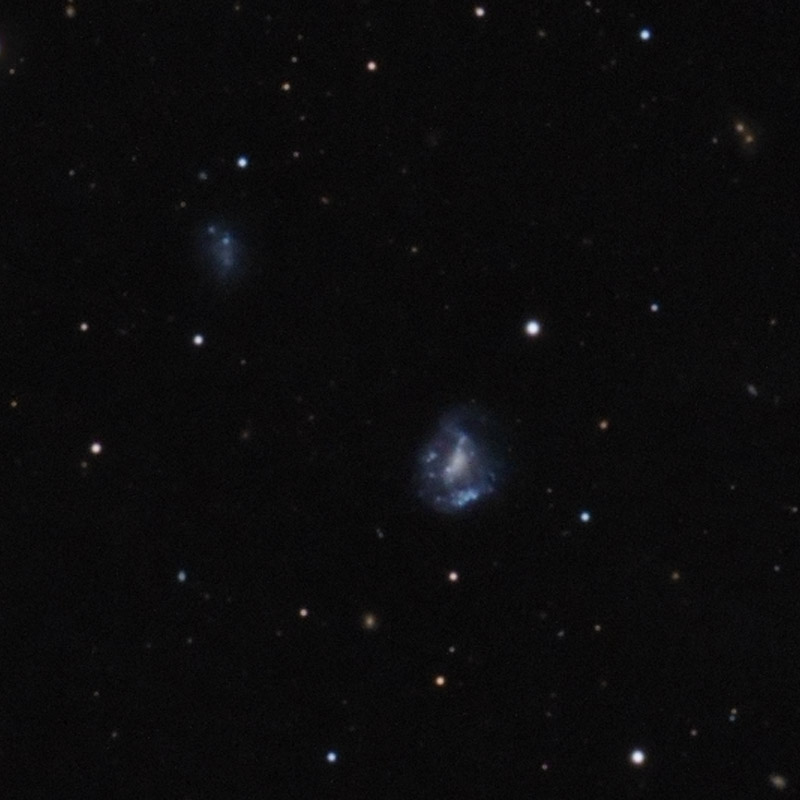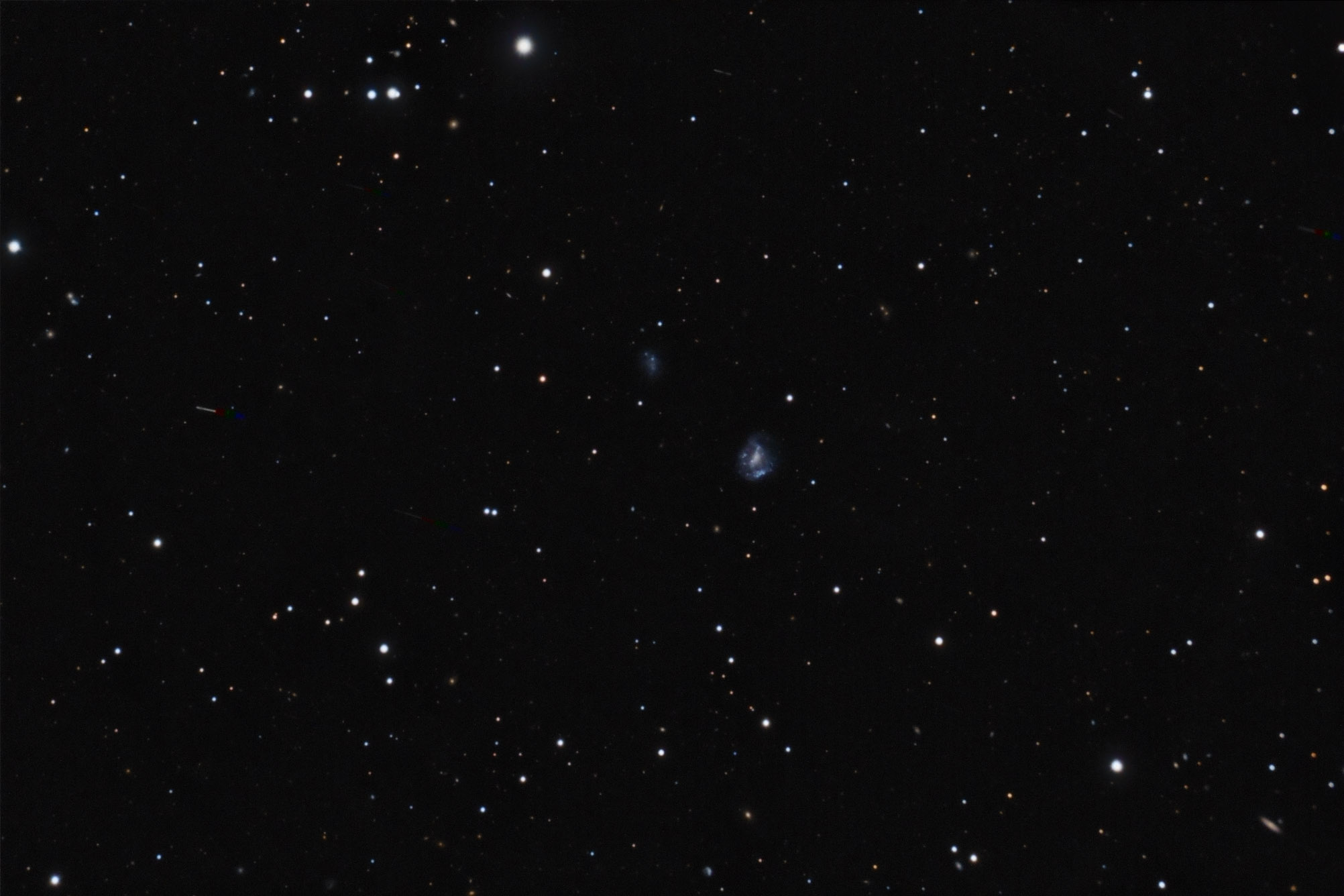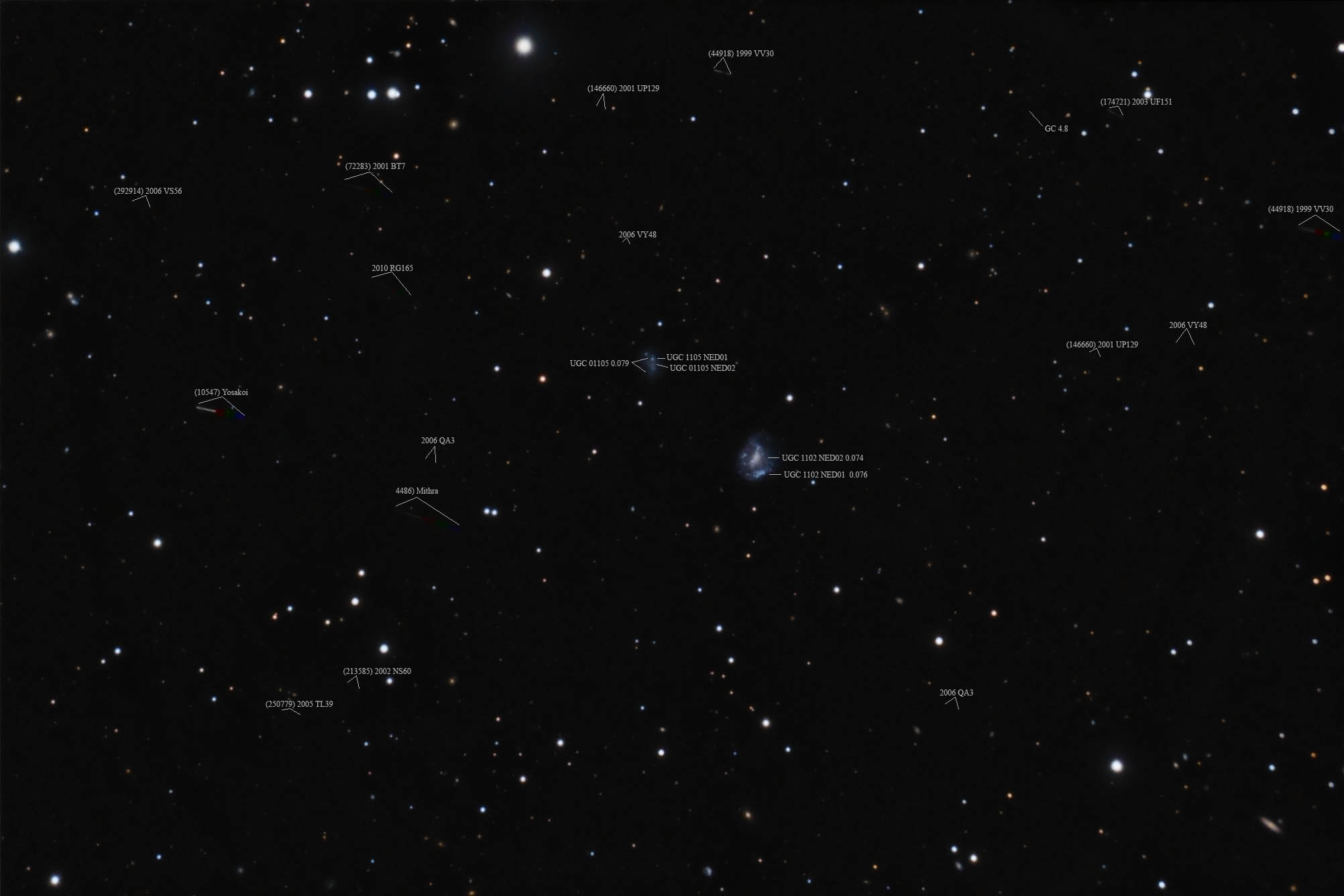Object name: ARP306Designation(s): ARP306, UGC01102, UGC01105, ARP 306 is classed by Arp under his double galaxy class. It is located in Pisces. Arp's comment: "Diffuse, hooked countertail." NED considers this a double double galaxy much like Epsilon Lyrae is a double double star. Each of the main galaxies is listed by NED as being a merging galaxy pair.
The larger galaxy pair is UGC 1102. The lower part is UGC 1102 NED01 at 76 million light-years while the main part of the galaxy is UGC 1102 NED02 with a redshift distance of 74 million light-years. This is the object he refers to in his comment. The "hooked countertail" comes off its north end. When giving the position of Arp 306 Arp used the coordinates of this pair rather than a position between both pairs.
The smaller and fainter pair to the northeast is UGC 1105 with a redshift distance of 79 million light-years. It doesn't have a redshift for each part only one for the pair. UGC 1105 NED01 is the very blue near starlike object toward the northern end of the galaxies core region. The lower, ill-defined part is UGC 1105 NED02. NED's position for the southern part is about the middle of the object where there is a faint, double, condensation rather than the lower, bigger and brighter condensation (all three appear about equal in the SDSS image, however. The lower one wasn't listed which surprised me. The only redshift value given is for the pair.
Did Arp realize this was two pairs of interacting galaxies? If he did he never mentioned it. Though he had little to say about any of his entries, letting the category speak for itself. What comments he did make added little to understanding the object, being only descriptive in nature.
The only other object in the image with a redshift measurement is the galaxy cluster NSCS J013202+044446 to the northwest of Arp 306. It is listed at NED as having 20 members and a redshift distance of about 4.8 billion light years. No diameter is given so how many of the very faint galaxies in this area are members I can't say.
This image contains more asteroid trails than I've ever captured on one image. The L channel was taken over two nights which helps in the capture of so many. 5 came from the first night under rather poor conditions while the other 11 were seen the second night. Four were in both images. Rather than 16 asteroids I actually captured 12, 4 of them twice. Color data came from the second night. So only "bright" asteroids from that night show a color trail.
Arp's image
http://ned.ipac.caltech.edu/level5/Arp/Figures/big_arp306.jpeg
14" LX200R @ f/10, L=8x10' RGB=2x10'x3, STL-11000XM, Paramount ME Related Designation(s):ARP 306, ARP 306a, ARP 306b, ARP306, CGCG 0130.0+0420, CGCG 412-002, HIPASS J0132+04, IRAS F01298+0420, KPG 036, MCG +01-05-002, MCG +01-05-003, PGC 005744, PGC 005759, UGC 01102, UGC 01105, UGC01102, UGC01105, UM 112, VV 173, VV 174, | | 

